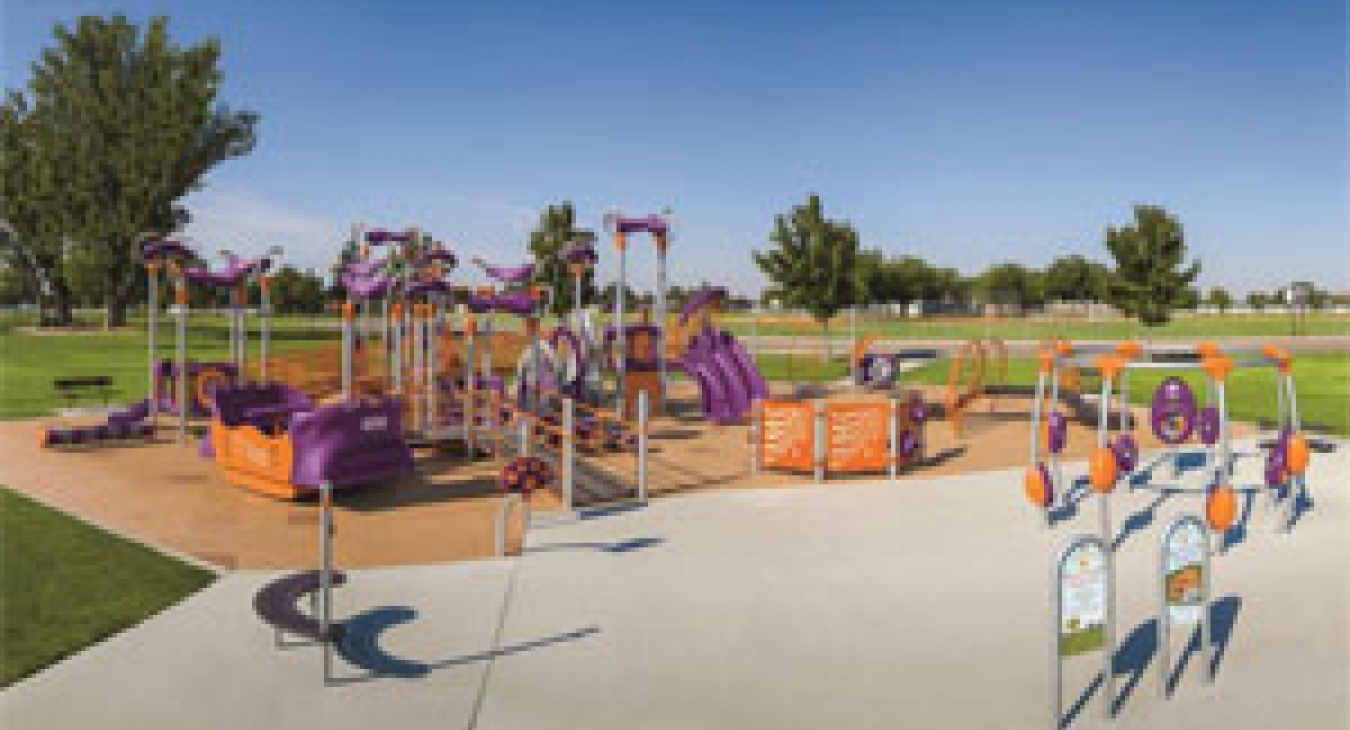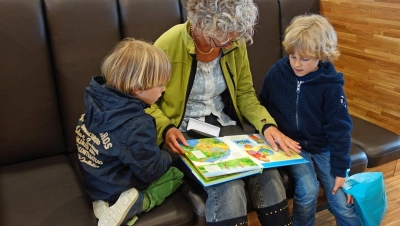How can a playground make a difference for a child with Autism Spectrum Disorder (ASD)?
Autism is complex. Some children are non-verbal while others have no problem speaking. Children with autism have a difficult time socializing and rarely interact successfully with other children in free play situations without a great deal of work.
These children may also have Sensory Processing Disorder (SPD), which changes the nature and strength of the sensory signals they receive. As a result, they may have trouble with balance and understanding where their body is in space.
The playground is the perfect place to practice skills: social skills, balancing, how the body relates to the space around it, and how it reacts to height and speed. Many children with autism are in therapy programs to learn to deal with these situations. The playground offers them a fun place to practice what they learn.
The playground can be a space to better understand one’s own ability to regulate input and practice socialization. However, not all playgrounds are created equal when it comes to children with autism.
Here are some things to look for in a play space that will benefit children on the spectrum:
Perimeter Containment
A parent who knows their child is a runner or wanderer is unlikely to take their child to a playground without a fence. It’s been documented that 80 percent of people on the spectrum will become a runner at some point. Sensory input becomes too much and they will try to escape. Children can become so engrossed in what they are doing that they aren’t conscious of where they are. If the playground is near traffic, there can be dangerous consequences.
Grouping of Activities
A child with ASD or SPD might seek or avoid stimulation. They should be offered a choice – the essence of control. Group the noisy activities together and the quiet activities in another area. Keeping certain activities together helps encourage socialization. Equipment that requires teamwork, like a seesaw, encourages children to communicate with at least one other individual.
Quiet area
Create a quiet area for children to regain control.
Balancing activities
A child with autism may have difficulty with balance. Provide a wide range of fun balancing activities with different heights, widths and motion that allow children to experiment.
Sensory Activities
Include a variety of sensory experiences including tactile, auditory, and activities that move like swings or spinning activities. Other activities including climbing, crawling and jumping help a child determine where their body is in space.
Line of sight
Seeing what’s going on helps quell anxiety and helps children assess their play options before engaging. Large structures should be placed to the back or a corner area to minimize areas that are not visible.
If your local playground doesn’t offer these features, ask the playground managers about providing them so everyone can enjoy the playground. For more information about playground design for children with autism or other disabilities, visit www.playworldsystems.com/inclusiveplay.
Source
http://playworldsystems.com/blog/autism-why-playgrounds-matter/








Outdoor play benefits all
Outdoor play benefits all children, and it can improve behaviour, social skills and attention in children with Autism Spectrum Disorder. Time to show your child the joy of great outdoors.
https://www.parentcircle.com/article/5-outdoor-activities-for-children-w...
Need info
My community is raising funds for a park
I would like to give my input for those that have autistic Children like myself. Can you provide me some suggestions for our new park
[email protected]
516.225.9222